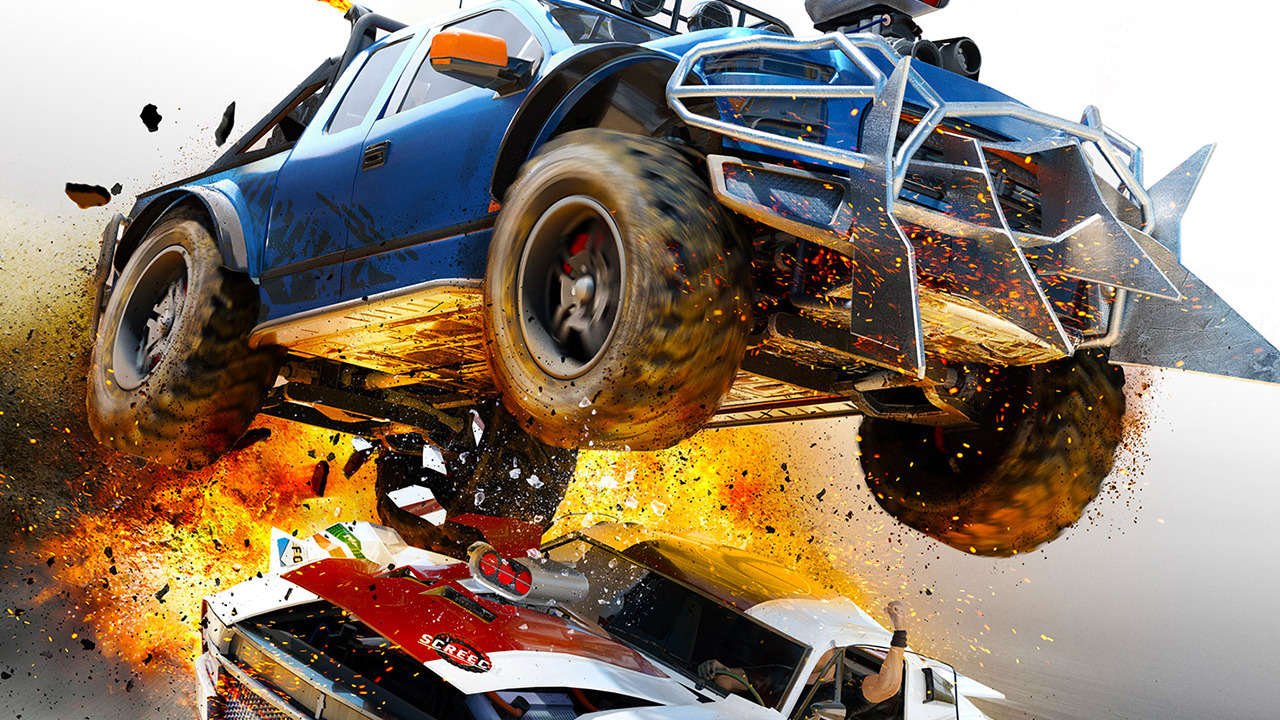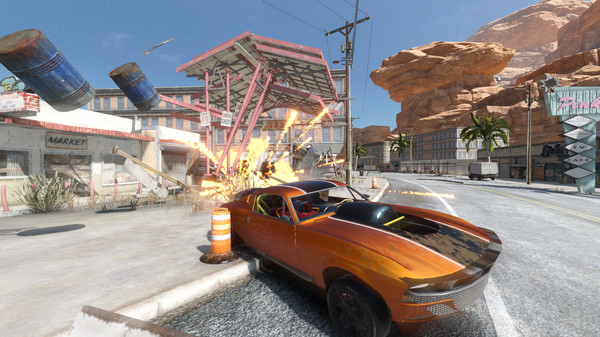
Few things rival the amount of fun that can be gleamed from a good arcade racer, like the Forza Horizon series, the Burnout games or many of Need for Speed‘s iterations. After all, there’s nothing like driving fast, drifting around corners, and doing your best to edge out opponents just before the finish line arrives. Well, that and driving through a detailed world, while causing destruction and renovating its landscape in the process.
Of course, the titles mentioned above aren’t the only arcade racing games in existence, as there have been many over the years. They are, however, the most popular and most notable, whereas others tend to be outliers that vary in quality and popularity. One such example is the FlatOut franchise, which debuted in late 2004 and became popular because of its ejectable drivers and related minigames.
In the years between then and now, three sequels and one remake (of the second game) have been released. It’s the most recent of those, FlatOut 4: Total Insanity, which we’ll focus on now, as it’s just recently made its way to North America after releasing in Europe first.
Developed by French studio, Kylotonn, and published by Bigben Interactive, FlatOut 4 is marketed as a return to form for the franchise. If you do some research and read some interviews, you’ll learn that what its new developers tried to do was go back to basics in order to create a clean break from FlatOut 3, which was terribly received when it hit Windows PCs. The result is a game that is true FlatOut, complete with frenetic racing, dangerous multiplayer and quite a few colourful minigames, some of which are based around ejecting one’s driver.
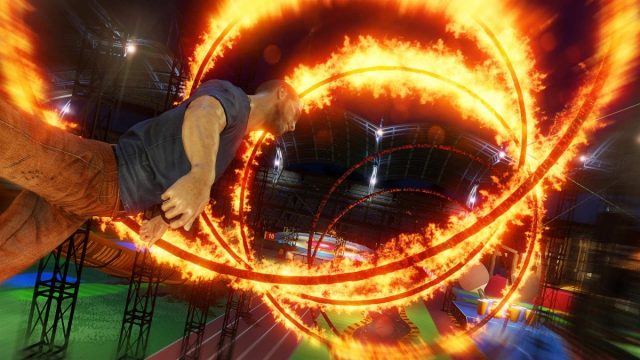
Unfortunately, though, while it is a return to basics, FlatOut 4: Total Insanity is not a return to form like many had hoped. Instead, it’s a problematic, frustrating and grind-heavy racing game that does whatever it can to avoid being fun.
First and foremost, we all play video games to unwind and have fun. It’s this enjoyment that lays at the base of this hobby, and it’s that factor which ultimately dictates whether a game is good or not. This is where the main problem with Kylotonn’s latest lays, as despite its developer’s efforts, Total Insanity simply isn’t fun. It could have been, but it isn’t, and that’s the result of more than one major flaw.
Although many of the things that make up a good racing game do, in fact, reside here, they’re overshadowed by flawed mechanics and design decisions that prevent enjoyment from occurring. The main culprit of this is the artificial intelligence, which drives the way one would expect a drunkard to after having had far too many. Instead of attempting to actually race the player, these computerized chariots do whatever they can to make your life frustrating. Weaving, slamming into you, and throwing you off course are their favourite tricks, and while a lot of that happens in other racing games, it doesn’t occur to this extent. It’s actually so prevalent here that completing a proper race can be difficult, which is something that ultimately led me to eject the disc in disgust.
The above is made much more annoying by the difficulty at which the game’s three tiered career mode is played. Since there doesn’t seem to be any sort of difficulty option for that lengthy mode, players are forced to engage in demanding races all the while dealing with unruly AI that doesn’t seem to grasp what racing means. It doesn’t help, either, that the physics are incredibly wonky, causing light bumps to result in spin outs and invisible ruts to send your car flying. Some of the core racing controls work as intended, but they, too, are unfortunately too floaty and problematic to allow for the type of precision that this game surprisingly demands.
Another problem with career mode relates to its design, wherein players must complete championships and one off challenges in order to progress. Although there’s a decent mixture of game types to be found, including traditional lap races, demolition derbies, time trials and assault challenges (with weapons), none are as good as they could have been. Sure, a lot of that has to do with the aforementioned issues, but mediocre track design and imprecise assault weapons also contribute. These things combine with other noted issues to make this a game that is often more about luck than it is about skill, and one that expects its players to fall in love with the retry button instead of hating the frequency at which they will need to use it.
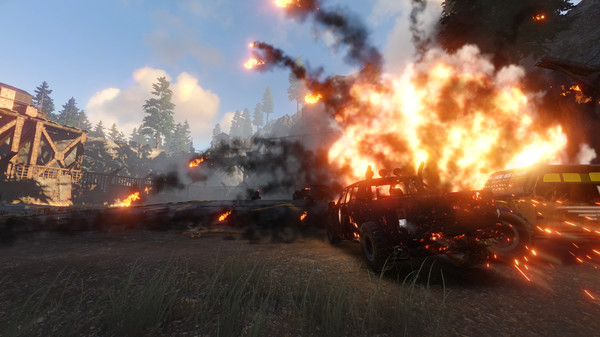
If you do manage to win, then you’ll be looking at a cash reward that is dependent on where you placed on the in-game podium. It’s never all that much, though, which is surprising given how incredibly expensive all of FlatOut 4‘s cars (of which there are three, increasingly fast and powerful types) tend to be. Not to mention each upgrade, which is necessary to purchase if you want to have a chance. As such, career mode quickly becomes a grind, wherein you’ll need to replay events in order to be competitive at the level that you’ve progressed to. Needless to say, it gets old quickly and will make you wonder why you’re even bothering.
Thankfully, FlatOut mode — which is where all of the minigames, checkpoint challenges and other such trials lay — is a bit more fun than its career-focused peer, which is only really enjoyable whenever one of its half-decent destruction derbies come up. It’s here where you’ll find games that reward you for ejecting your driver, as opposed to the races where poor visibility and tough to distinguish pathways will result in crash-based ejection.
At first, you’ll only have several games/challenges to play, but quite a few others can be unlocked through progression, as well as some old fashioned trial and error. Things begin with a game where you must eject your driver and then send him flying into a block castle, in an attempt to knock it over and score mega points, before progressing to a similar take on beer pong, a points-based demolition derby and a checkpoint run where a bomb is strapped to your vehicle and ready to explode once a timer finishes counting down. Scoring enough points in these, which is sometimes easier said than done due to the wonky controls, will allow you to unlock more trials and minigames if you care to do so.
There is multiplayer to be found, as well, but it’s not enough to save this sequel from being forgotten. Hell, I couldn’t even find another player online when I tried, which prevented me from being able to test out the online gameplay and its related servers. I did, however, receive a connection error the first time I tried to find a game, despite the loading menu having said that I had connected to the service.
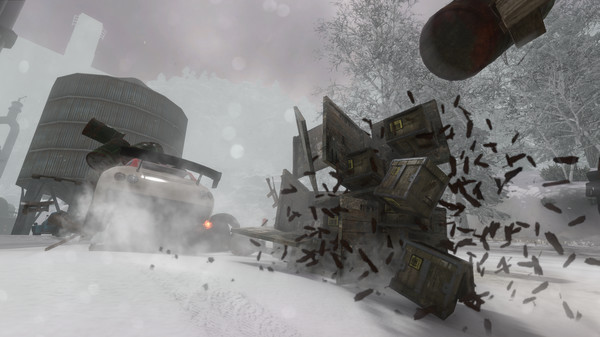
Of course, as is likely obvious, FlatOut 4: Total Insanity isn’t a triple-A game. Instead, it’s better classified as more of a B-franchise, although its quality doesn’t relate to either of those lettered grades. As such, I went in with tempered expectations and a desire to enjoy what I was about to play. After all, I’ve never been someone who’s avoided games just because they’re not triple-A or from a major studio, as those who’ve been reading my reviews for quite some time will attest to. I’ve completed several hundred games in my lifetime, and have thoroughly enjoyed titles that others have passed on or given middling scores. Unfortunately, though, despite being part of one of my all-time favourite genres, FlatOut 4: Total Insanity failed to hook me in the slightest. It had the potential to do so, but was simply too infuriating to play, which led to me abandoning it.
This could have been a much better game had it received more time in the proverbial oven, plus another couple of coats of polish, but that didn’t happen. Instead, what we’ve received is a buggy, physics-illiterate racing game with a middling nu-metal and punk rock score, as well as occasionally problematic visuals. I say that, because blur and speed sometimes combine to make it difficult to see and react to where you need to go in FlatOut 4‘s racing modes, while its destructible environments do absolutely nothing to help this fact. Allowing the computer and player controlled vehicles to destroy road signs that point the way was a terrible idea, and the racing suffers because of it.
I guess it goes without saying now, but FlatOut 4: Total Insanity isn’t worth your time or your money, especially at its suggested retail price of $59.99 Canadian. For that price, you can find a much better racing game to play.
**This review is based on the Xbox One version of the game, which we were provided with.**

